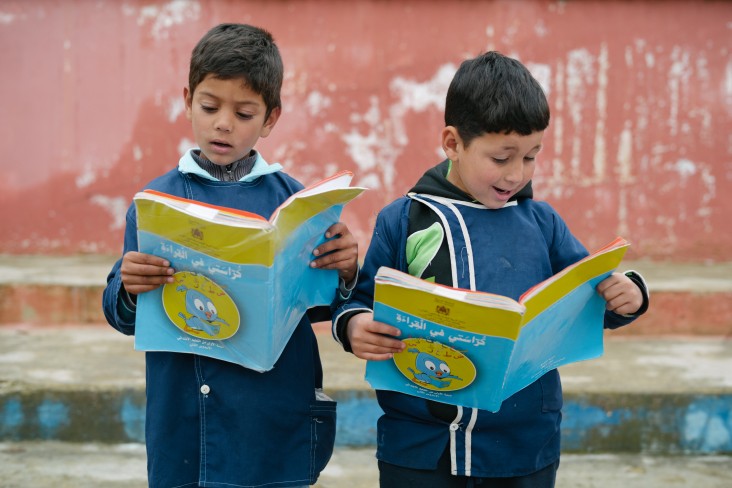Speeches Shim

Learning to read is an overwhelming task for Moroccan children who have consistently ranked among the worst performers in international reading tests. Teaching reading is no easy task for the teachers either. For years, Moroccans struggled to find an efficient way to facilitate the teaching-learning process.
But this is no longer the case.
Since 2015, the new syllabic approach for Arabic reading instruction was introduced into first and second grade classrooms under the USAID project Reading for Success. The impact was quickly noticed on students and teachers. It was so successful that the Ministry of National Education decided this new approach should be adopted in all first grade classes one across the country in the 2017-2018 school year. In its first year of nationwide implementation, the program continues to have far-reaching implications.
"When you see a student who used to struggle, and now is reading fine, it's happiness beyond words. My students have quickly improved their reading skills. Spelling and reading have become an easier task for them. I am living a dream!" Hajar Kendil, first grade teacher
Located in the far south of Morocco is the Abdelkarim Khattabi primary school in Dakhla, a region which was not part of the reading program intervention. But that did not stop Hajar Kendil, a first-grade teacher, from quickly embracing the new reading instruction approach. Inspired by the new approach, she created an easy, fun activity to help her students acquire a strong understanding of how sounds in Arabic words work. That is when the ‘the letter sounds drawer’ activity came into play.
In the drawer, Hajar stores all the vocalization, or vowel, marks (Tashkil in Arabic) that indicate how the letter should be pronounced. The students are made to understand that in Arabic, the vowels are not represented by individual letters but by attaching vocalization marks to written consonants. A letter is ‘unhappy’ unless it is associated with its corresponding mark that will allow it to fulfill its function of communication in Arabic. With the introduction of each letter, the students excitedly run to the drawer to search for the right mark in order to bring life and happiness to the letter.
Ahlam, a first grade student in Abdelkarim Khattabi primary school, drew a sad face of the letter “ت”.
“Why is it sad?” asked a USAID employee.
“Because we did not give it a shape to be able to exist,” said Ahlam. She then drew a big, bright smile on the letter’s face. “But now it is happy: تَ, تُ, تِ,” she continued.
By building a ‘friendly’ relation between her students and the Arabic syllables, Hajar turned her students into eager readers. They are proud that they can now sound out each word and easily decode printed words.
“We are now able to recognize each new sound,” said Sidha, a first grade student in the same school.
Judging by the students’ enthusiasm, this new reading program did more than improve their reading skills. It provided them with the confidence they need to learn and grow in an interactive learning environment.

Comment
Make a general inquiry or suggest an improvement.